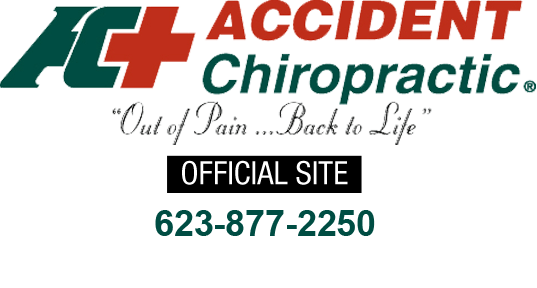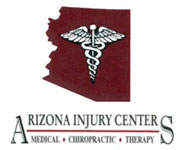A 30-year-old mom bends over to pick up her four-year-old and feels a sharp stabbing pain in her lower back. A 60-year-old man bends over to pick up his five-year-old grandchild and feels an electrical shooting pain in his lower back. For both, the pain is so severe they need to sit down. The next
Read more
Like conventional medicine, chiropractic is based upon scientific principles of diagnosis through testing and empirical observations. Treatment is based upon the practitioner's rigorous training and clinical experience. Unlike conventional medicine, which focuses on attempting to treat disease once it occurs, chiropractic attempts to improve the health of the individual in an effort to avoid illness in the first place. Most people would rather be healthy and avoid illness, if they could. This is one of the main reasons for the big upsurge in the popularity of chiropractic. People are recognizing the benefit of seeking an alternative to traditional medicine; one that will help them achieve and maintain optimal health.
What truly differentiates doctors of chiropractic from any other healthcare professionals is the fact that chiropractors are the only professionals who are trained to diagnose and treat what are called spinal subluxations. The word 'subluxation' comes from the Latin words meaning 'to dislocate' (luxare) and 'somewhat or slightly' (sub). So the term 'vertebral subluxation' literally means a slight dislocation (misalignment) of the bones in the spine. Although this term was adequate in the 1800s when much was still misunderstood about the human body, today the word 'subluxation' has changed in meaning to capture the complex of neurological, structural, and functional changes that occur when a bone is 'out of place.' For this reason chiropractors usually refer to subluxations of the spine as the "Vertebral Subluxation Complex", or "VSC" for short.
The chiropractic approach to healthcare is holistic, meaning that it addresses your overall health. It recognizes that many lifestyle factors such as exercise, diet, rest, and environment impact your health. For this reason, chiropractors recommend changes in lifestyle' eating, exercise, and sleeping habits in addition to chiropractic care.
Chiropractic is so much more than simply a means of relieving pain. Ultimately, the goal of the chiropractic treatment is to restore the body to its natural state of optimal health. Since the body has a remarkable ability to heal itself and to maintain its own health, the primary focus is simply to remove those things which interfere with the body's normal healing ability.
This section explains more about the background of chiropractic care, how it works, who it can benefit, and more!
-
Back Pain and Herniated Discs
Category: Newsletter Library, Back, Body & Joint Pain
-
Backpacks and Back Pain
Category: Newsletter Library, Back, Body & Joint Pain
Backpacks are the tote of choice for most school-aged children with two books per class to lug around. In fact, it is reported that between 92% and 94% of schoolchildren carry backpacks. And it appears these contraptions are evolving somewhat with sturdier-looking designs, heavily padded straps and about
Read more -
Dealing with Arthritis
Category: Newsletter Library, Back, Body & Joint Pain
We've all seen the TV ads ─ nice-looking woman in her fifties, sitting on a nice sofa in a nice living room, rubbing her hands, in obvious pain. Of course, she's not Lady Macbeth, trying to rub off the imagined blood of her murdered husband. She's a woman with arthritis. According to the Center for
Read more -
Do I Have Carpal Tunnel Syndrome?
Category: Newsletter Library, Back, Body & Joint Pain
Many people believe they have carpal tunnel syndrome (CTS). The majority have been told by their medical doctor that they have CTS. Others have mistakenly concluded that because they have some numbness and tingling in their wrist or hand, they must have this neurological disorder. Still others have ongoing
Read more -
Effective Diagnosis and Treatment of Low Back Pain
Category: Newsletter Library, Back, Body & Joint Pain
Here's an all-too-common situation. You develop low back pain that lasts for more than a few days and you're uncomfortable enough to go see your primary care physician. He or she tells you it's not clear what's going on and sends you for a magnetic resonance imaging (MRI) study of your lumbar spine.
Read more -
Healthy Hips and Healthy Knees
Category: Newsletter Library, Back, Body & Joint Pain
The numbers of individuals undergoing total hip replacement and total knee replacement are increasing significantly.1 Annual rates in the United States for total hip replacement have increased more than 50%. In Denmark, rates have been increasing by 30%. Annual rates in the United States for total knee
Read more -
Is My Pain Serious?
Category: Newsletter Library, Back, Body & Joint Pain
How do you know whether your pain needs to be evaluated by your chiropractor? This is the age-old question. The answer needs to be specific to your particular problem, rather than a one-size-fits all solution. But there are good guidelines that everyone can follow. First, is your pain deep and boring
Read more -
Lines of Force
Category: Newsletter Library, Back, Body & Joint Pain
Most chronic joint-related problems involving the hip, knee, and ankle1,2 can be successfully managed with conservative treatment. Surgery for such conditions is typically a last resort and frequently does not work out well. Revision (repeat) procedures are common and represent a failure of appropriate
Read more -
Replacement Parts: What You Need to Know
Category: Newsletter Library, Back, Body & Joint Pain
If you've ever been involved in a motor vehicle collision, you're probably familiar with the term "replacement parts" or "crash parts". Your auto insurance company will usually offer to repair your car using after-market bumpers, door panels, wheel assemblies, and other parts. Or, you may prefer to have
Read more -
Suffer from Neck Pain?
Category: Newsletter Library, Back, Body & Joint Pain
Do you suffer from neck pain? If you do, you're not alone. Nearly 75 percent of American adults will suffer from neck pain at some point in their lives. And, looking at our anatomy, it's no wonder so many of us do. Though having your head perched on top of your spine gives you a great view of your environment,
Read more -
The Best Treatment for Trigger Points
Category: Newsletter Library, Back, Body & Joint Pain
Trigger points are painful nodules in muscular tissue, commonly found in the upper back, low back, and gluteal muscles. Trigger points are frequently chronic, persisting from day to day without much relief. When someone says, “My muscles are all in knots”, those knots are most likely trigger points. The
Read more -
The Problem of Radiating Pain
Category: Newsletter Library, Back, Body & Joint Pain
Many people experience radiating pain as a component of neck pain or low back pain. A person with neck pain might have pain that radiates down her arm, possibly into the hand.1 A person with low back pain might have accompanying leg pain, possibly traveling into the foot. Such arm/hand pain or leg/foot
Read more -
What Should I Do About My Pain?
Category: Newsletter Library, Back, Body & Joint Pain
No one really wants to be a worrier. We certainly don't want to visit our chiropractor or family doctor for every ache and pain. But eventually we all experience physical problems and it may be difficult to know what to do about them. Some problems are immediate and serious. If you suddenly experience
Read more -
What Should I Do for a Herniated Disc?
Category: Newsletter Library, Back, Body & Joint Pain
Herniated discs in the lumbar spine are fairly common and having one doesn’t sentence you to a lifetime of back problems. In fact, at least one-third of people over age 30 are found to have one or more herniated discs in the lower back when a magnetic resonance imaging study (MRI) is done for reasons
Read more -
What's Wrong with My Back?
Category: Newsletter Library, Back, Body & Joint Pain
Not all back problems are created equal. One person may have been working on a home improvement project and injured her back while simultaneously bending and twisting. Another person may have developed back pain as a result of a vehicular collision. Another person may be experiencing back pain as a result
Read more -
When Is Back Pain More Than Back Pain?
Category: Newsletter Library, Back, Body & Joint Pain
Out of the blue, your back starts to hurt. At first, it's just an annoyance. You can live with it. You've had lower back pain before and it went away on its own. Now it's a few weeks later. You've got a low-grade pain that's not getting any better. You're actually worse, in fact, because your back
Read more
Locations
Find us on the map
Office Hours For All Locations
West Valley, Glendale, and Maryvale
Monday:
7:00 am-7:00 pm
Tuesday:
7:00 am-7:00 pm
Wednesday:
7:00 am-7:00 pm
Thursday:
7:00 am-7:00 pm
Friday:
7:00 am-7:00 pm
Saturday:
9:00 am-3:00 pm
Sunday:
9:00 am-3:00 pm

